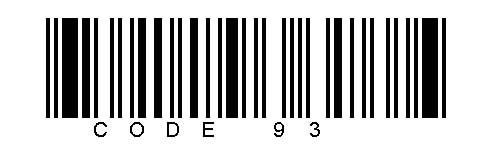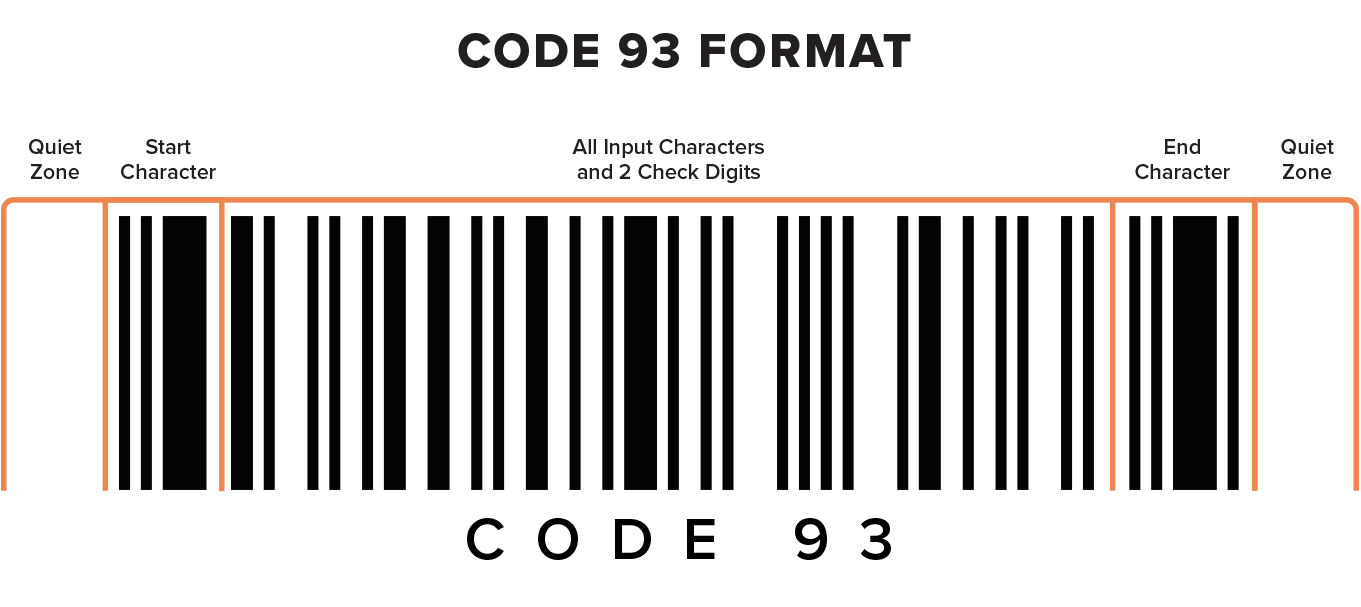Code 93
Code 93
Code 93 was developed in 1982 as a high-density, variable-length symbology that combines both Code 39 Extended and GS1-128 elements to enhance overall encodation. This barcode can contain 43 different data characters — numbers 0-9, letters A-Z, six symbols (minus, plus, period, dollar sign, backslash, and percent), and space. In addition, Code 93 uses five special characters which can be combined with the common 43 data characters to represent all 128 ASCII characters.
The “93” designation refers to the fact that each encoded character is constructed using nine modules that are arranged into three bars with adjacent spaces. This code also requires two checksum characters, often called the “C” and “K” characters, and in most cases a human-readable form of the encoded information is printed below the barcode itself.

Format
Code 93 contains six key format elements:
- A Leading Quiet Zone
- One Start Character
- All Input Characters which Represent Data
- Two Check Digits
- One Stop character
- A Trailing Quiet Zone
In Code 93 symbology, the two check digits must always immediately precede the stop character. The digits are based on the modulo 47 (mod 47) algorithm.
This barcode’s name is derived from its use of nine modules that represent three bars and three spaces. Bars can be one to three modules wide, while spaces are one to four modules wide. By varying the module width of both bars and spaces, Code 93 makes it possible to encode significant amounts of information in a small space.

Common Use Cases
While Code 93 improves on the Code 39 framework to offer high-density linear data encoding, it has largely been replaced by other alternatives for most applications. One exception is the Canadian mail delivery system. Canada Post uses Code 93 to encode supplementary delivery information.